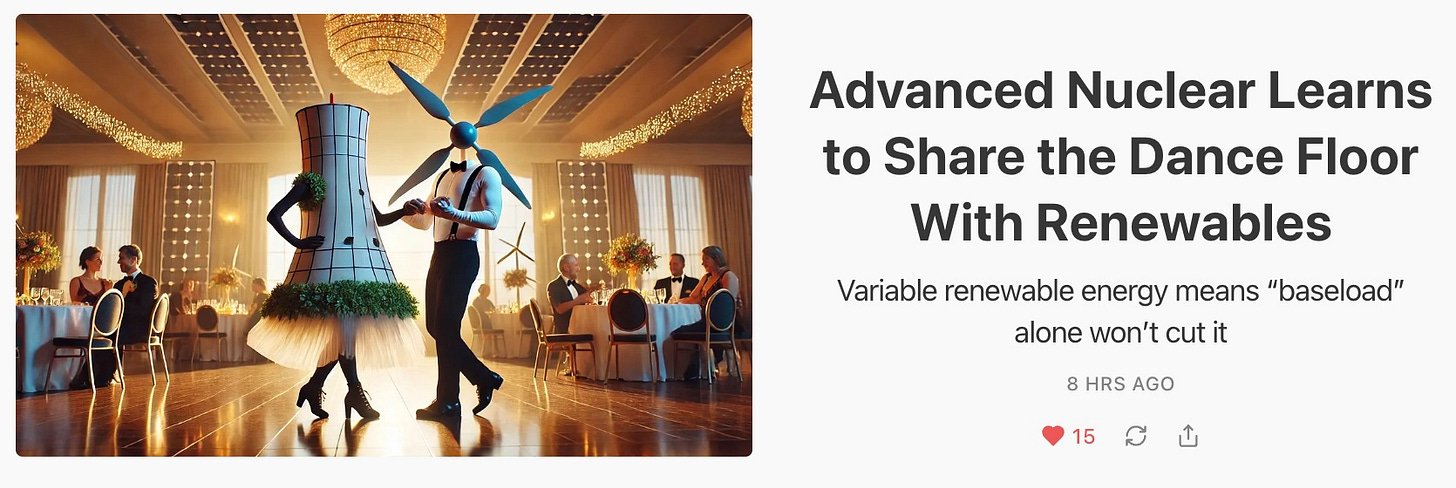A Challenge to a Flexing Role for Nuclear Energy Amid Grid Growth of Renewables
Longtime renewable-energy maven Amory Lovins offers a reply to nuclear maven Matt Wald
Earlier today, I cross-posted a
article on the shifting role of nuclear power as renewable-energy sources expand, written by my onetime New York Times colleague Matt Wald (who later worked for the Nuclear Energy Institute lobby).
This is an arena of great interest to the Department of Energy’s nuclear division, as you can explore here: “3 Ways Nuclear is More Flexible Than You Might Think.” The same goes for the National Renewable Energy Laboratory: “Nuclear–Renewable Synergies for Clean Energy Solutions.”
But in my repost, I asked for reactions and got one from Amory Lovins, a longtime consultant on energy efficiency and renewable energy and co-founder of RMI, when it was the Rocky Mountain Institute. (I referred to Lovins’ “negawatts revolution” in a piece on the underappreciated value of conservation awhile back.)
Here’s Lovins’ reply:
Andy, I think Matt’s views on how grids work and how to keep them reliable as they become renewably powered would have made sense ~15 years ago. He uses the antique honorific “baseload” in only two of its five senses, namely #1 and #4 (or a variant referring to constant output):
However, his discussion of grid-balancing resources is limited to pumped hydro, batteries, and hydrogen. There are ~8 other carbon-free choices that are ample to make the batteries unnecessary and at lower system cost, as sketched in this conceptual supply curve:






